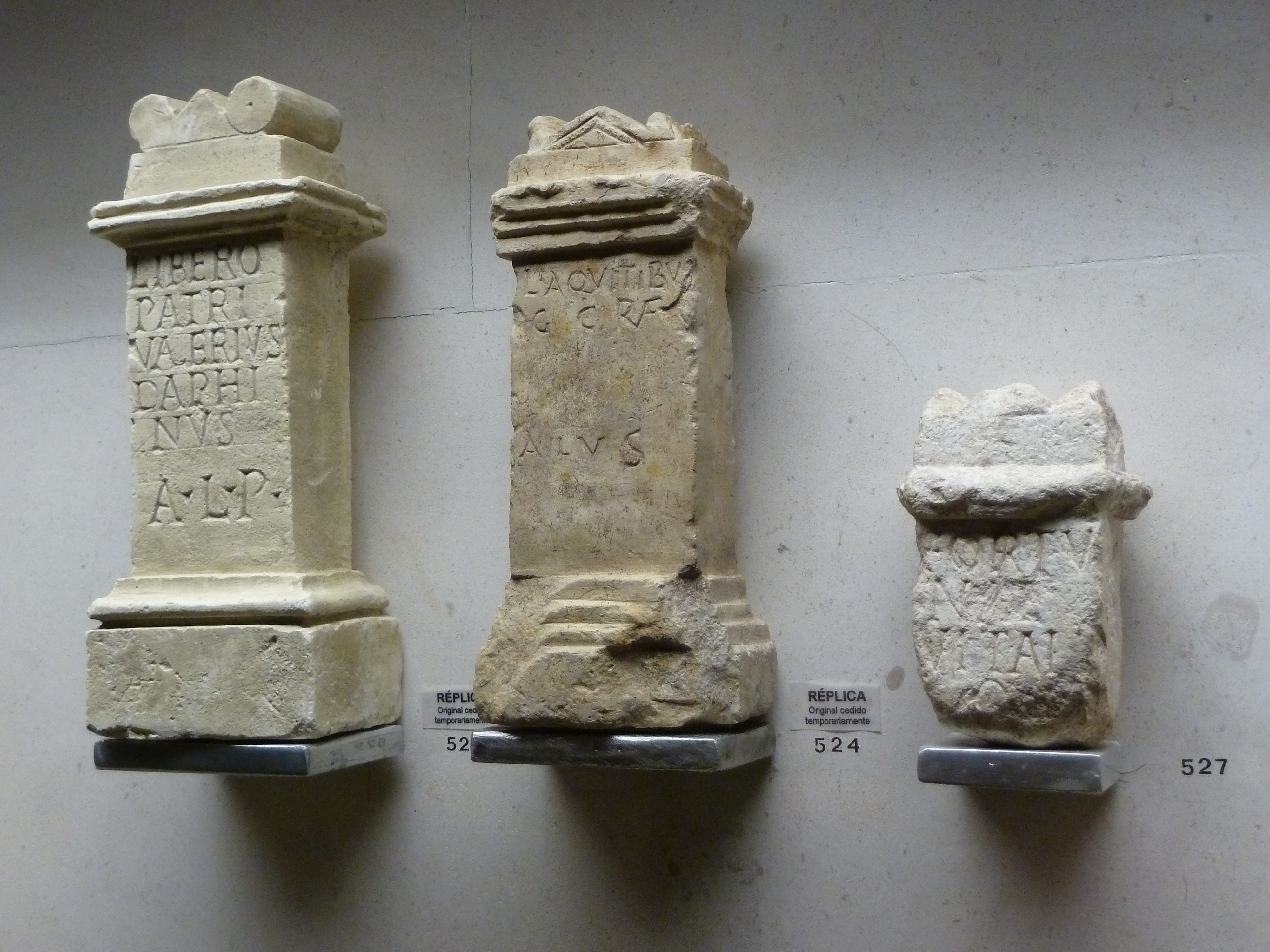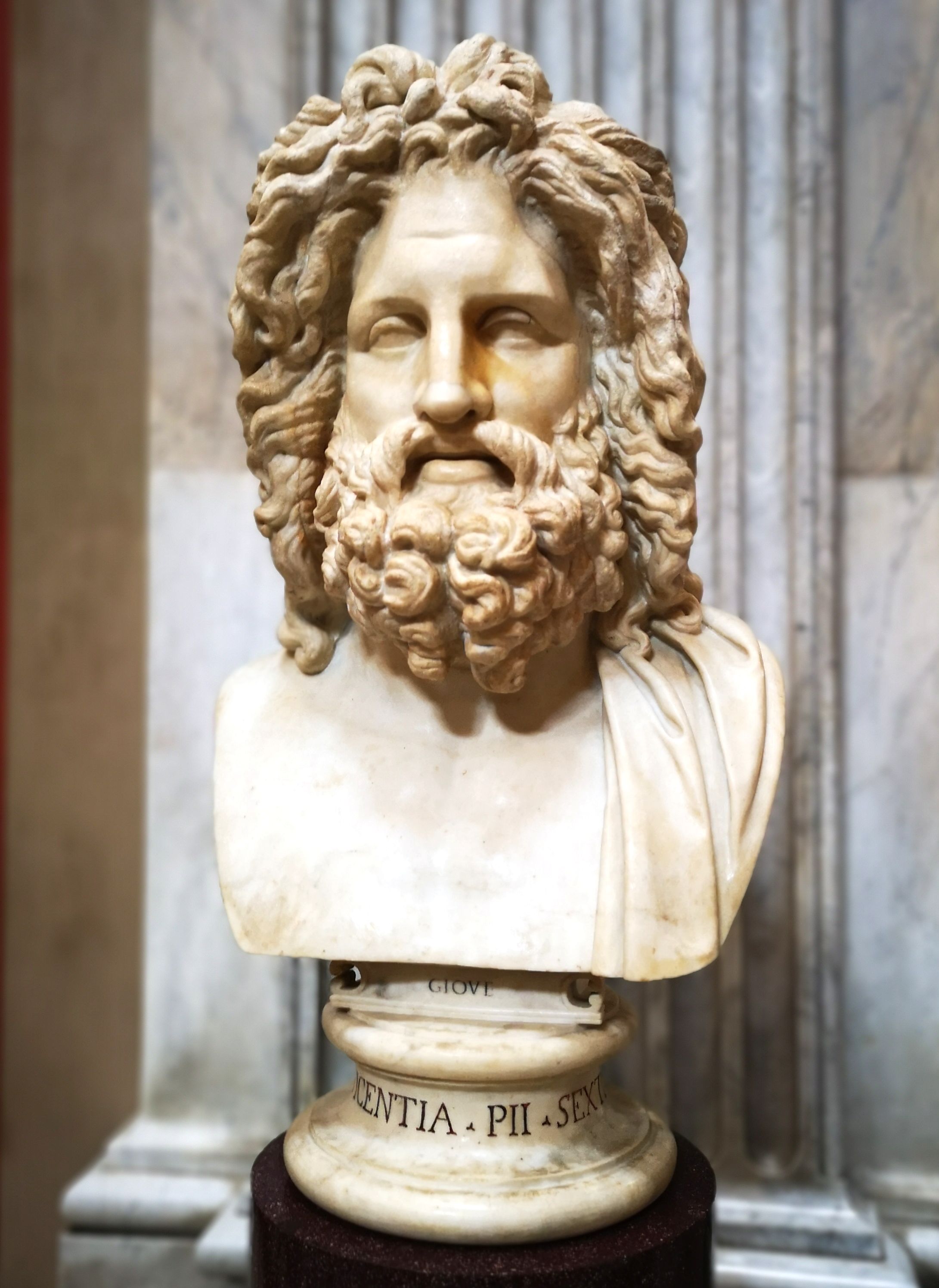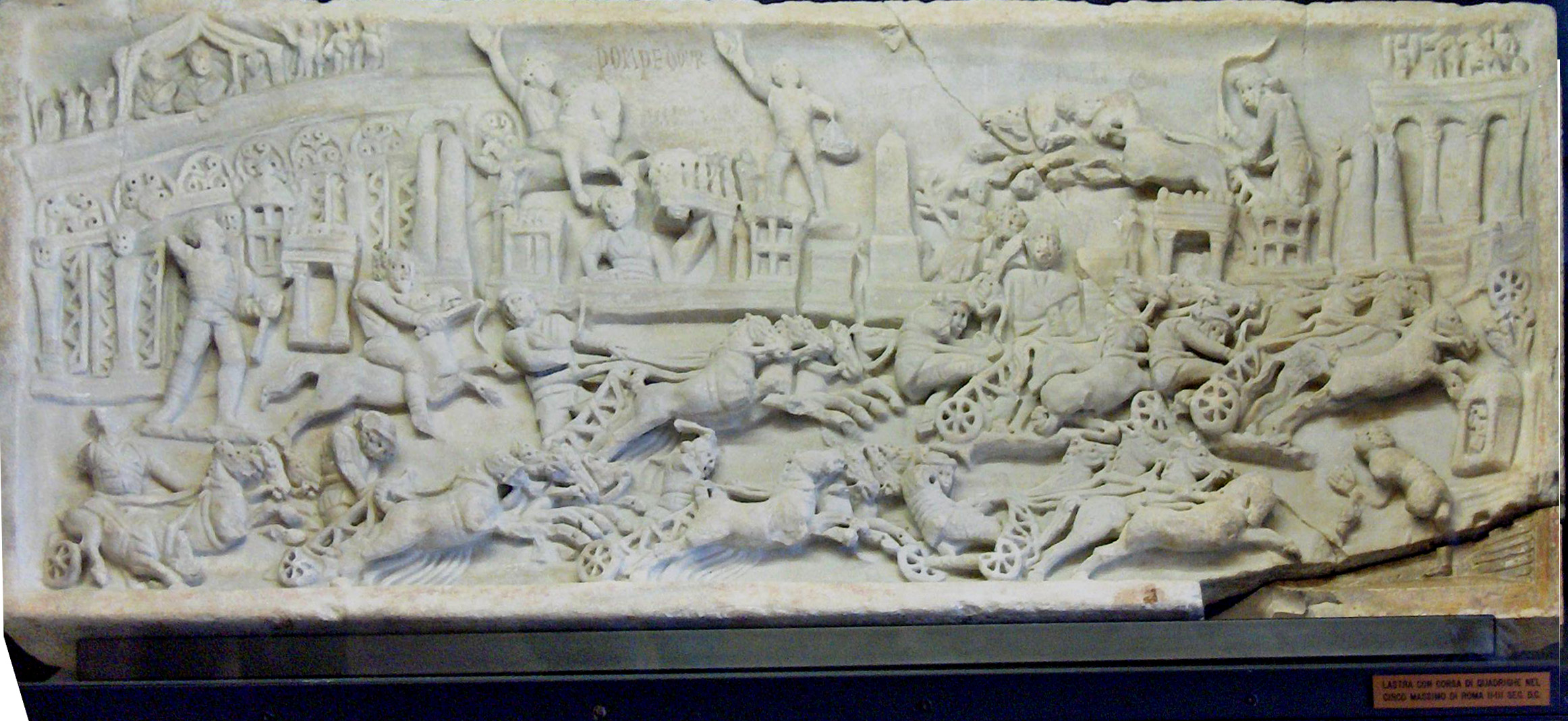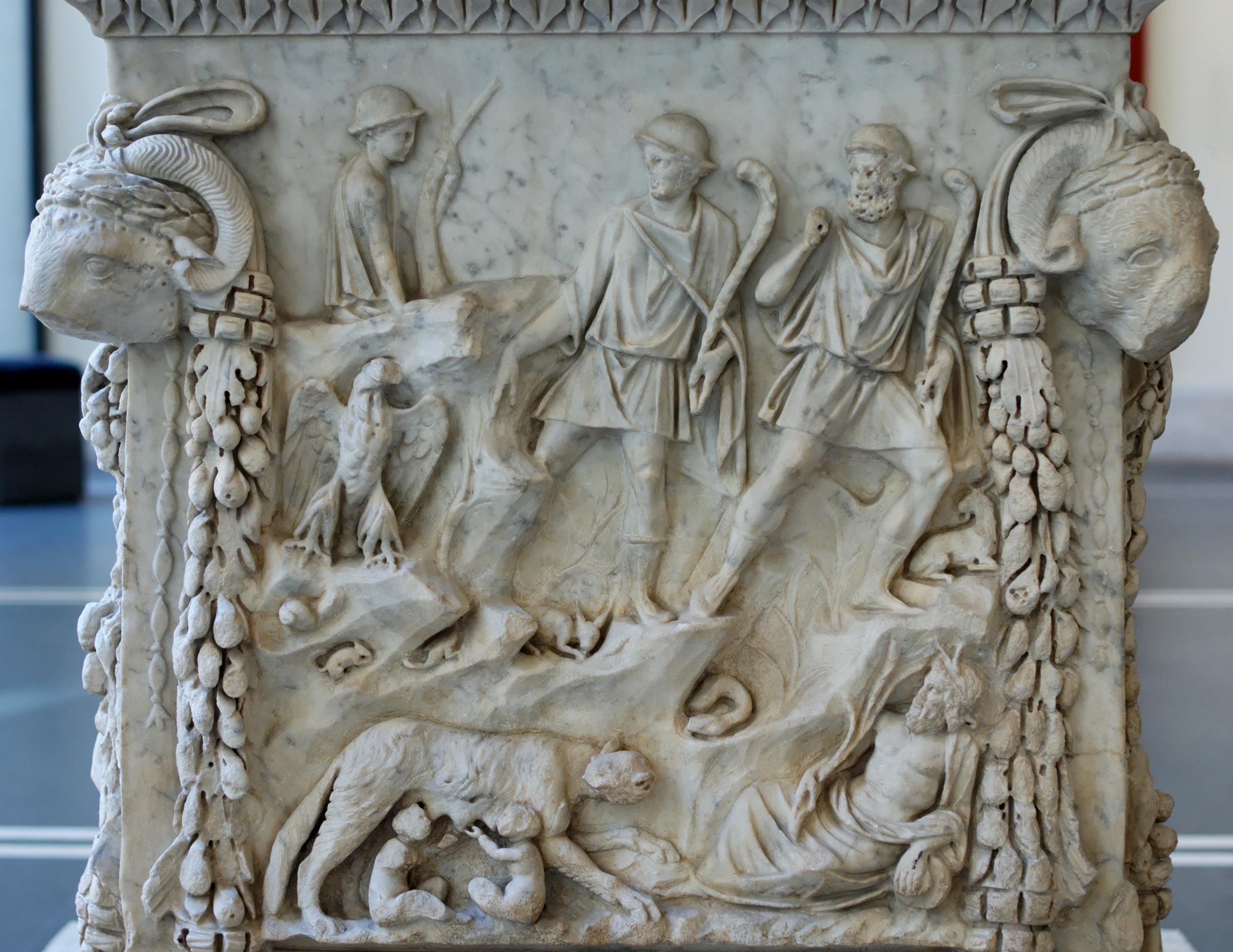|
Liber
In ancient Roman religion and mythology, Liber ( , ; "the free one"), also known as Liber Pater ("the free Father"), was a god of viticulture and wine, male fertility and freedom. He was a patron deity of Rome's plebeians and was part of their Aventine Triad. His festival of Liberalia (March 17) became associated with free speech and the rights attached to coming of age. His cult and functions were increasingly associated with Romanised forms of the Greek Dionysus/Bacchus, whose mythology he came to share. Etymology The name ''Līber'' ('free') stems from Proto-Italic ''*leuþero'', and ultimately from Proto-Indo-European ''*h₁leudʰero'' ('belonging to the people', hence 'free'). Origins and establishment Before his official adoption as a Roman deity, Liber was companion to two different goddesses in two separate, archaic Italian fertility cults; Ceres, an agricultural and fertility goddess of Rome's Hellenised neighbours, and Libera, who was Liber's female equivalent. ... [...More Info...] [...Related Items...] OR: [Wikipedia] [Google] [Baidu] |
Religion In Ancient Rome
Religion in ancient Rome consisted of varying imperial and provincial religious practices, which were followed both by the people of Rome as well as those who were brought under its rule. The Romans thought of themselves as highly religious, and attributed their success as a world power to their collective piety ''( pietas)'' in maintaining good relations with the gods. Their polytheistic religion is known for having honored many deities. The presence of Greeks on the Italian peninsula from the beginning of the historical period influenced Roman culture, introducing some religious practices that became fundamental, such as the '' cultus'' of Apollo. The Romans looked for common ground between their major gods and those of the Greeks ('' interpretatio graeca''), adapting Greek myths and iconography for Latin literature and Roman art, as the Etruscans had. Etruscan religion was also a major influence, particularly on the practice of augury, used by the state to seek th ... [...More Info...] [...Related Items...] OR: [Wikipedia] [Google] [Baidu] |
Proto-Indo-European Language
Proto-Indo-European (PIE) is the reconstructed common ancestor of the Indo-European language family. Its proposed features have been derived by linguistic reconstruction from documented Indo-European languages. No direct record of Proto-Indo-European exists. Far more work has gone into reconstructing PIE than any other proto-language, and it is the best understood of all proto-languages of its age. The majority of linguistic work during the 19th century was devoted to the reconstruction of PIE or its daughter languages, and many of the modern techniques of linguistic reconstruction (such as the comparative method) were developed as a result. PIE is hypothesized to have been spoken as a single language from 4500 BC to 2500 BC during the Late Neolithic to Early Bronze Age, though estimates vary by more than a thousand years. According to the prevailing Kurgan hypothesis, the original homeland of the Proto-Indo-Europeans may have been in the Pontic–Caspian st ... [...More Info...] [...Related Items...] OR: [Wikipedia] [Google] [Baidu] |
Dionysus
In ancient Greek religion and myth, Dionysus (; grc, Διόνυσος ) is the god of the grape-harvest, winemaking, orchards and fruit, vegetation, fertility, insanity, ritual madness, religious ecstasy, festivity, and theatre. The Romans called him Bacchus ( or ; grc, Βάκχος ) for a frenzy he is said to induce called ''bakkheia''. As Dionysus Eleutherios ("the liberator"), his wine, music, and ecstatic dance free his followers from self-conscious fear and care, and subvert the oppressive restraints of the powerful. His '' thyrsus'', a fennel-stem sceptre, sometimes wound with ivy and dripping with honey, is both a beneficent wand and a weapon used to destroy those who oppose his cult and the freedoms he represents. Those who partake of his mysteries are believed to become possessed and empowered by the god himself. His origins are uncertain, and his cults took many forms; some are described by ancient sources as Thracian, others as Greek. In Orphic religion, he ... [...More Info...] [...Related Items...] OR: [Wikipedia] [Google] [Baidu] |
Jupiter (mythology)
Jupiter ( la, Iūpiter or , from Proto-Italic "day, sky" + "father", thus " sky father" Greek: Δίας or Ζεύς), also known as Jove ( gen. ''Iovis'' ), is the god of the sky and thunder, and king of the gods in ancient Roman religion and mythology. Jupiter was the chief deity of Roman state religion throughout the Republican and Imperial eras, until Christianity became the dominant religion of the Empire. In Roman mythology, he negotiates with Numa Pompilius, the second king of Rome, to establish principles of Roman religion such as offering, or sacrifice. Jupiter is usually thought to have originated as a sky god. His identifying implement is the thunderbolt and his primary sacred animal is the eagle, which held precedence over other birds in the taking of auspices and became one of the most common symbols of the Roman army (see Aquila). The two emblems were often combined to represent the god in the form of an eagle holding in its claws a thunderbolt, frequen ... [...More Info...] [...Related Items...] OR: [Wikipedia] [Google] [Baidu] |
Plebeians
In ancient Rome, the plebeians (also called plebs) were the general body of free Roman citizens who were not patricians, as determined by the census, or in other words " commoners". Both classes were hereditary. Etymology The precise origins of the group and the term are unclear, but may be related to the Greek, ''plēthos'', meaning masses. In Latin, the word is a singular collective noun, and its genitive is . Plebeians were not a monolithic social class. Those who resided in the city and were part of the four urban tribes are sometimes called the , while those who lived in the country and were part of the 31 smaller rural tribes are sometimes differentiated by using the label . ( List of Roman tribes) In ancient Rome In the annalistic tradition of Livy and Dionysius, the distinction between patricians and plebeians was as old as Rome itself, instituted by Romulus' appointment of the first hundred senators, whose descendants became the patriciate. Modern hypothese ... [...More Info...] [...Related Items...] OR: [Wikipedia] [Google] [Baidu] |
Ceres (Roman Mythology)
In ancient Roman religion, Ceres ( , ) was a goddess of agriculture, grain crops, fertility and motherly relationships.Room, Adrian, ''Who's Who in Classical Mythology'', p. 89-90. NTC Publishing 1990. . She was originally the central deity in Rome's so-called plebeian or Aventine Triad, then was paired with her daughter Proserpina in what Romans described as "the Greek rites of Ceres". Her seven-day April festival of Cerealia included the popular '' Ludi Ceriales'' (Ceres' games). She was also honoured in the May '' lustratio'' of the fields at the Ambarvalia festival, at harvest-time, and during Roman marriages and funeral rites. She is usually depicted as a mature woman. Ceres is the only one of Rome's many agricultural deities to be listed among the Dii Consentes, Rome's equivalent to the Twelve Olympians of Greek mythology. The Romans saw her as the counterpart of the Greek goddess Demeter,''Larousse Desk Reference Encyclopedia'', The Book People, Haydock, 1995, p. 21 ... [...More Info...] [...Related Items...] OR: [Wikipedia] [Google] [Baidu] |
Mars (mythology)
In ancient Roman religion and myth, Mars ( la, Mārs, ) was the god of war and also an agricultural guardian, a combination characteristic of early Rome. He was the son of Jupiter and Juno, and was pre-eminent among the Roman army's military gods. Most of his festivals were held in March, the month named for him ( Latin ''Martius''), and in October, which began the season for military campaigning and ended the season for farming. Under the influence of Greek culture, Mars was identified with the Greek god Ares,''Larousse Desk Reference Encyclopedia'', The Book People, Haydock, 1995, p. 215. whose myths were reinterpreted in Roman literature and Roman art, art under the name of Mars. The character and dignity of Mars differed in fundamental ways from that of his Greek counterpart, who is often treated with contempt and revulsion in Ancient Greek literature, Greek literature. Mars's altar in the Campus Martius, the area of Rome that took its name from him, was supposed to ... [...More Info...] [...Related Items...] OR: [Wikipedia] [Google] [Baidu] |
Proto-Italic Language
The Proto-Italic language is the ancestor of the Italic languages, most notably Latin and its descendants, the Romance languages. It is not directly attested in writing, but has been reconstructed to some degree through the comparative method. Proto-Italic descended from the earlier Proto-Indo-European language. History Although an equation between archeological and linguistic evidence cannot be established with certainty, the Proto-Italic language is generally associated with the Terramare (1700–1150 BC) and Villanovan cultures (900–700 BC). On the other hand, work in glottochronology has argued that Proto-Italic split off from the western Proto-Indo-European dialects some time before 2500 BC. It was originally spoken by Italic tribes north of the Alps before they moved south into the Italian Peninsula during the second half of the 2nd millennium BC. Linguistic evidence also points to early contacts with Celtic tribes and Proto-Germanic speakers. Phonology Consonants ... [...More Info...] [...Related Items...] OR: [Wikipedia] [Google] [Baidu] |
Ludi
''Ludi'' (Latin plural) were public games held for the benefit and entertainment of the Roman people (''populus Romanus''). ''Ludi'' were held in conjunction with, or sometimes as the major feature of, Roman religious festivals, and were also presented as part of the cult of state. The earliest ''ludi'' were horse races in the circus (''ludi circenses''). Animal exhibitions with mock hunts ('' venationes'') and theatrical performances (''ludi scaenici'') also became part of the festivals. Days on which ''ludi'' were held were public holidays, and no business could be conducted—"remarkably," it has been noted, "considering that in the Imperial era more than 135 days might be spent at these entertainments" during the year. Although their entertainment value may have overshadowed religious sentiment at any given moment, even in late antiquity the ''ludi'' were understood as part of the worship of the traditional gods, and the Church Fathers thus advised Christians not to pa ... [...More Info...] [...Related Items...] OR: [Wikipedia] [Google] [Baidu] |
Roman Mythology
Roman mythology is the body of myths of ancient Rome as represented in the literature and visual arts of the Romans. One of a wide variety of genres of Roman folklore, ''Roman mythology'' may also refer to the modern study of these representations, and to the subject matter as represented in the literature and art of other cultures in any period. Roman mythology draws from the mythology of the Italic peoples and ultimately from Proto-Indo-European mythology. Roman mythology also draws directly on Greek mythology, potentially as early as Rome's protohistory, but primarily during the Hellenistic period of Greek influence and through the Roman conquest of Greece, via the artistic imitation of Greek literary models by Roman authors. The Romans identified their own gods with those of the ancient Greeks—who were closely historically related in some cases, such as Zeus and Jupiter—and reinterpreted myths about Greek deities under the names of their Roman counterparts. Gr ... [...More Info...] [...Related Items...] OR: [Wikipedia] [Google] [Baidu] |
Libera (mythology)
Proserpina ( , ) or Proserpine ( ) is an ancient Roman goddess whose iconography, functions and myths are virtually identical to those of Greek Persephone. Proserpina replaced or was combined with the ancient Roman fertility goddess Libera, whose principal cult was housed in the Aventine temple of the grain-goddess Ceres, along with the wine god Liber. Each of these three deities occupied their own ''cella'' at the temple. Their cults were served or supervised by a male public priesthood. Ceres was by far the senior of the three, one of the dii consentes, Rome's approximate equivalent to the Greek Twelve Olympians. She was identified with Greek Demeter and Liber was identified with Bacchus and Dionysus. Libera is sometimes described as a female version of Liber Pater, concerned with female fertility. Otherwise she is given no clear identity or mythology by Roman sources, and no Greek equivalent. Nothing is known of her native iconography: her name translates as a feminine f ... [...More Info...] [...Related Items...] OR: [Wikipedia] [Google] [Baidu] |








